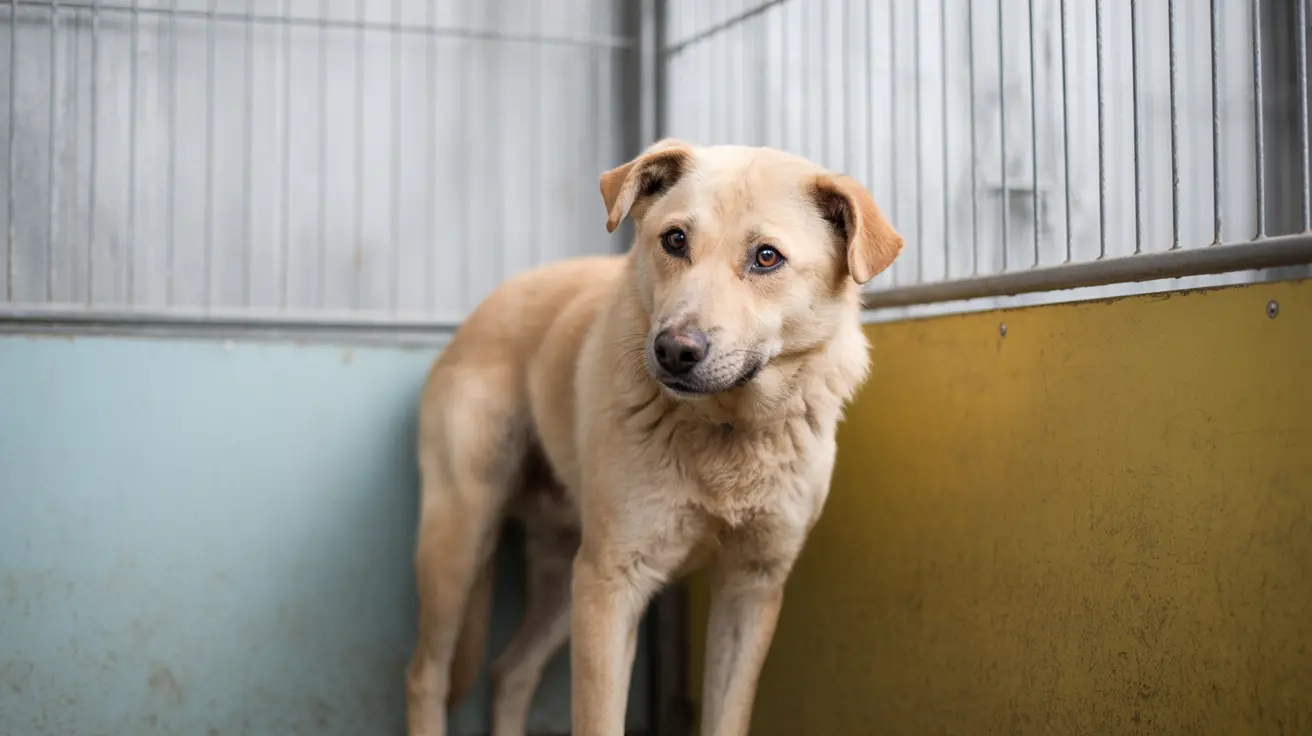Complete Guide to Seasonal Dog Shedding Care: Supporting Healthy Coat Transitions
As temperatures shift and daylight hours change, your furry companion begins one of nature's most remarkable transformations—the seasonal coat transition. Understanding seasonal dog shedding care is essential for every dog owner who wants to support their pet's natural shedding process while promoting healthy, lustrous fur growth. This comprehensive guide will equip you with expert knowledge and practical strategies to navigate your dog's seasonal coat changes with confidence.
Seasonal shedding is far more than just an inconvenience—it's a sophisticated biological process that allows your dog to adapt to changing environmental conditions. Most dogs shed their dense winter undercoat during spring transitions, making way for a lighter summer coat that helps regulate body temperature. By implementing proper seasonal dog shedding care techniques, you can transform this natural process from a household challenge into an opportunity to enhance your dog's coat health and strengthen your bond through regular grooming routines.
Understanding the Science Behind Seasonal Coat Changes
The science behind seasonal shedding reveals a fascinating interplay between photoperiod (daylight exposure) and temperature fluctuations that trigger hormonal responses in your dog's body. These environmental cues signal the hair follicles to release their grip on winter undercoat fibers, allowing room for new, seasonally appropriate fur to emerge. Double-coated breeds like German Shepherds, Siberian Huskies, and Golden Retrievers experience the most dramatic seasonal transitions, often shedding between 4 and 35 grams of undercoat per kilogram of body weight during peak seasons.
During this natural process, your dog's skin metabolism increases significantly to support the growth of new hair follicles. This heightened cellular activity demands substantial nutritional resources, particularly protein, which can account for up to one-third of your dog's daily protein requirements during active shedding periods. Understanding these biological demands helps explain why proper seasonal dog shedding care extends far beyond simple brushing—it requires a holistic approach encompassing nutrition, grooming, and environmental management.
Essential Nutrition for Healthy Coat Regrowth
Supporting your dog's seasonal coat transition begins with providing optimal nutrition that fuels healthy hair follicle development. High-quality protein serves as the foundation for strong, lustrous fur, as hair is composed primarily of keratin—a protein structure that requires adequate amino acid availability for proper formation. During peak shedding seasons, consider supplementing your dog's diet with protein-rich foods or high-quality commercial diets specifically formulated for coat health.
Critical nutrients for seasonal dog shedding care include biotin, zinc, and omega-3 fatty acids, which work synergistically to promote healthy skin and coat development. Omega-3 fatty acids, particularly those found in fish oil supplements, help reduce inflammation, improve skin barrier function, and enhance the natural shine of your dog's coat. Consult with your veterinarian before introducing supplements, but many dogs benefit from adding a teaspoon of olive oil or fish oil to their daily meals during heavy shedding periods.
Adequate hydration plays an equally crucial role in maintaining healthy skin and coat. Dogs should consume approximately one ounce of water per pound of body weight daily, as dehydrated skin can exacerbate hair loss and prevent optimal regrowth. Consider adding moisture-rich foods or encouraging water intake through multiple clean water sources throughout your home.
Breed-Specific Grooming Techniques and Tools
Short-Haired Breeds
Short-haired dogs often shed more frequently due to their denser coat structure, requiring specific grooming approaches for effective seasonal dog shedding care. Wire brushes with curved teeth that reach the skin prove most effective for removing dead undercoat from breeds like Labradors, Dalmatians, and German Shorthaired Pointers. The curved design allows the bristles to penetrate through the topcoat and capture loose undercoat fibers before they fall throughout your home.
For short-haired breeds, focus your grooming efforts on high-density areas including the tail, flanks, and areas behind the ears where undercoat tends to accumulate most heavily. Use firm but gentle strokes, working in the direction of hair growth to avoid causing discomfort. Curry combs and rubber grooming gloves work exceptionally well for sensitive areas like the belly, providing effective dead hair removal while offering a massage-like experience your dog will enjoy.
Long-Haired Breeds
Long-haired dogs require a more systematic approach to seasonal dog shedding care, beginning with topcoat preparation before addressing the undercoat. Start each grooming session with a wide-toothed comb to gently detangle the outer coat, working through any knots or mats that could trap shed undercoat and create larger problems. This preliminary step prevents painful pulling and ensures your brushing efforts reach the skin level where loose undercoat accumulates.
After detangling, use slicker brushes with fine wire bristles to work through the undercoat systematically. Section the coat and brush small areas thoroughly, ensuring your brush strokes reach all the way to the skin surface. Pay particular attention to areas prone to matting, such as behind the ears, under the legs, and around the collar area. These zones often harbor the most shed undercoat and require extra attention during seasonal transitions.
Recognizing Normal vs. Abnormal Shedding Patterns
While seasonal shedding is completely natural, distinguishing between normal coat transitions and concerning hair loss patterns is crucial for responsible seasonal dog shedding care. Normal seasonal shedding typically occurs twice yearly—spring and fall—with the heaviest shedding happening during spring as dogs lose their winter undercoat. This process generally lasts 3-6 weeks and should result in even coat thinning without creating bald patches or exposed skin areas.
Abnormal shedding patterns that warrant veterinary attention include excessive hair loss accompanied by skin irritation, patchy baldness, persistent itching, or behavioral changes. These symptoms may indicate underlying health issues such as food allergies, hormonal imbalances, parasitic infections, or thyroid disorders. Additionally, if your dog's shedding seems disproportionate to the season or continues excessively beyond typical seasonal timeframes, professional evaluation can help identify and address potential health concerns.
Maximizing Outdoor Activity for Natural Coat Health
Regular outdoor exposure to varying weather conditions serves as a natural catalyst for healthy seasonal dog shedding care by stimulating skin metabolism and encouraging the natural release of loose undercoat. Sunlight exposure helps regulate your dog's circadian rhythms, which in turn influence the hormonal triggers responsible for seasonal coat changes. Aim for daily outdoor activities that expose your dog to natural light and temperature variations, even during winter months.
Wind and natural air movement during outdoor activities help dislodge loose undercoat fibers, reducing the amount of dead hair that accumulates in your home. Consider incorporating more vigorous activities like hiking, running, or extended play sessions during peak shedding seasons. These activities not only provide mental and physical stimulation but also naturally assist in the shedding process while promoting overall coat health through improved circulation.
Indoor Environment Management and Allergy Control
Effective seasonal dog shedding care extends beyond grooming to encompass comprehensive indoor environment management that protects both your family's comfort and air quality. During peak shedding seasons, increase your vacuuming frequency and consider investing in a high-quality vacuum designed specifically for pet hair removal. HEPA filter systems can significantly reduce airborne dander and shed hair particles, providing relief for family members with allergies.
Strategic placement of washable blankets and covers on furniture creates designated pet areas while protecting upholstery from excessive hair accumulation. Lint rollers, rubber gloves, and microfiber cloths become invaluable tools for quick daily maintenance between thorough cleaning sessions. Consider designating specific areas of your home as grooming zones, preferably in easily cleaned spaces like bathrooms or garages, to contain shed hair during brushing sessions.
Safe and Responsible Hair Disposal Methods
Proper disposal of collected shed hair represents an often-overlooked aspect of seasonal dog shedding care that carries both environmental and safety implications. Never dispose of dog hair in natural environments, as it can pose toxicity risks to wildlife, particularly if your dog receives topical flea treatments or medications. The safest disposal method involves bagging collected hair and placing it in your regular household trash.
Some environmentally conscious pet owners explore creative reuse options for clean, untreated dog hair, such as composting (after ensuring no chemical treatments are present) or using it as natural wildlife deterrent in gardens. However, these applications should only be considered if you can guarantee the hair is free from any topical treatments, medications, or chemical residues that could harm other animals or contaminate soil systems.
Professional Grooming Support and When to Seek Help
While regular at-home care forms the foundation of seasonal dog shedding care, professional grooming services offer valuable support during intense shedding periods. Professional groomers possess specialized tools like high-velocity blow dryers and professional-grade de-shedding tools that can remove significantly more loose undercoat than typical home grooming sessions. Consider scheduling professional grooming appointments at the beginning of each seasonal transition to jumpstart the shedding process.
Professional groomers can also identify potential skin issues, parasites, or coat abnormalities that might escape notice during routine home care. They're trained to recognize early signs of skin conditions that could complicate seasonal shedding and can provide valuable guidance on breed-specific grooming techniques tailored to your dog's unique coat characteristics.
Frequently Asked Questions
- How often should I brush my dog during seasonal shedding periods?
During peak seasonal shedding, daily brushing is recommended for most breeds to effectively remove loose undercoat and prevent excessive hair accumulation in your home. Double-coated breeds may benefit from twice-daily brushing sessions during the heaviest shedding weeks.
- Can I give my dog supplements to improve coat health during shedding season?
Yes, omega-3 fatty acid supplements, biotin, and zinc can support healthy coat development during seasonal transitions. However, always consult with your veterinarian before introducing any supplements to ensure they're appropriate for your dog's specific health needs and current diet.
- Is it normal for my dog to shed different amounts each season?
Seasonal shedding intensity can vary based on factors including age, health status, diet quality, and environmental conditions. Older dogs may shed less intensively, while younger, healthier dogs typically experience more robust seasonal coat changes.
- What should I do if my dog's seasonal shedding seems excessive compared to previous years?
Significant changes in shedding patterns warrant veterinary evaluation, as they may indicate underlying health issues such as hormonal imbalances, nutritional deficiencies, or skin conditions requiring professional treatment.
- How can I minimize allergens during my dog's seasonal shedding period?
Regular grooming, frequent bathing with hypoallergenic shampoos, HEPA air filtration, and increased cleaning frequency can significantly reduce allergens. Focus on removing shed hair promptly and maintaining clean indoor environments.
- Are there specific dog breeds that require different seasonal shedding care approaches?
Yes, double-coated breeds like Huskies and German Shepherds require more intensive grooming during seasonal transitions, while single-coated breeds may need less frequent but still regular maintenance to support healthy coat renewal.
- When should seasonal shedding be considered a veterinary emergency?
Seek immediate veterinary attention if seasonal shedding is accompanied by skin lesions, severe itching, behavioral changes, loss of appetite, or if you notice sudden, dramatic increases in hair loss that create bald patches.
Conclusion
Mastering seasonal dog shedding care transforms a potentially frustrating aspect of pet ownership into an opportunity to enhance your dog's health and strengthen your bond through regular grooming rituals. By understanding the biological processes driving seasonal coat changes and implementing comprehensive care strategies encompassing proper nutrition, breed-specific grooming techniques, and environmental management, you can support your dog's natural shedding cycle while minimizing household disruption.
Remember that effective seasonal dog shedding care is an investment in your pet's long-term health and comfort. The time and effort you invest in proper grooming, nutrition, and monitoring during seasonal transitions will be rewarded with a healthier, more comfortable dog sporting a lustrous, well-maintained coat. Stay attentive to changes in your dog's shedding patterns, maintain regular veterinary checkups, and don't hesitate to seek professional guidance when questions arise about your pet's coat health.






